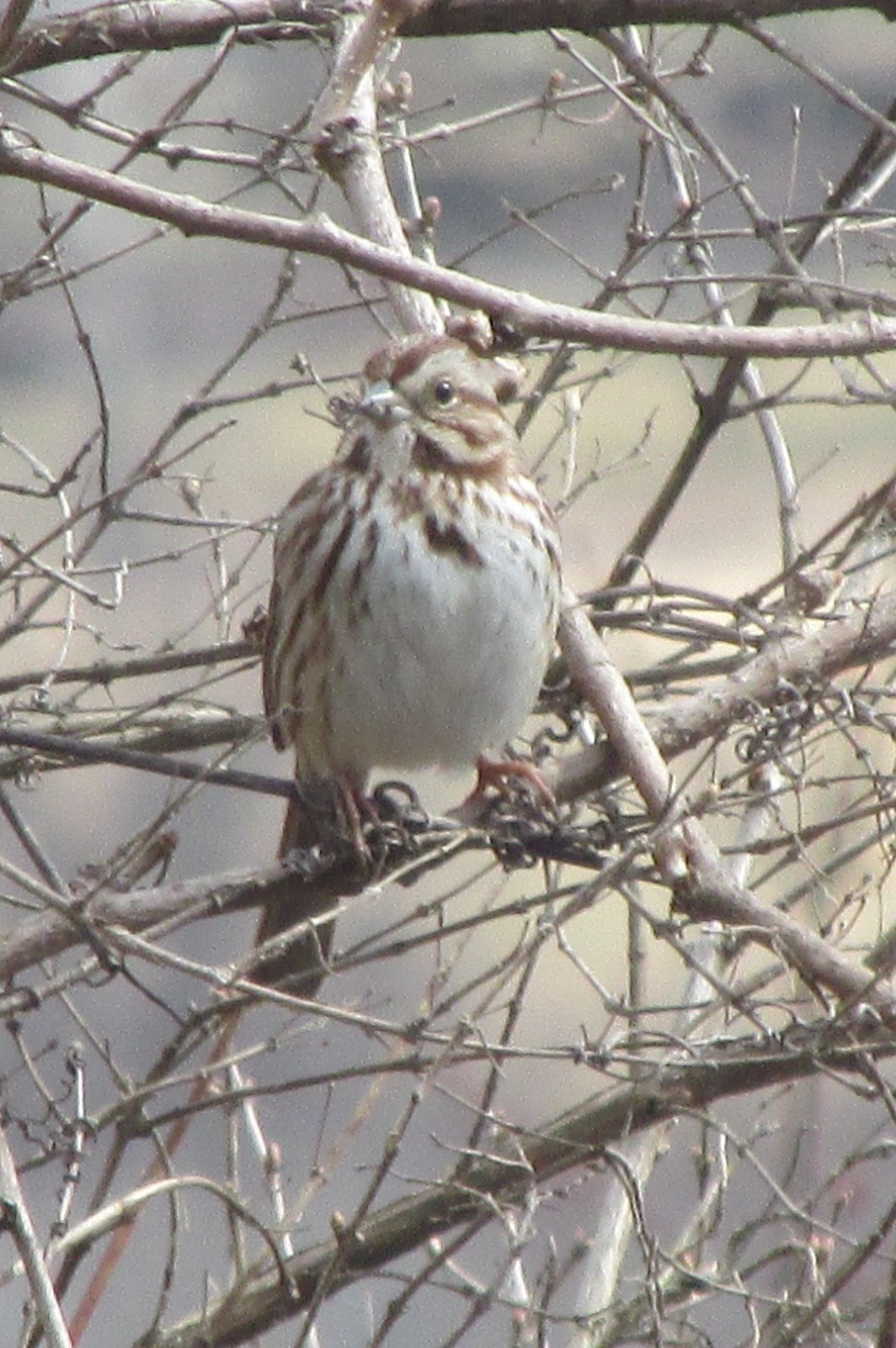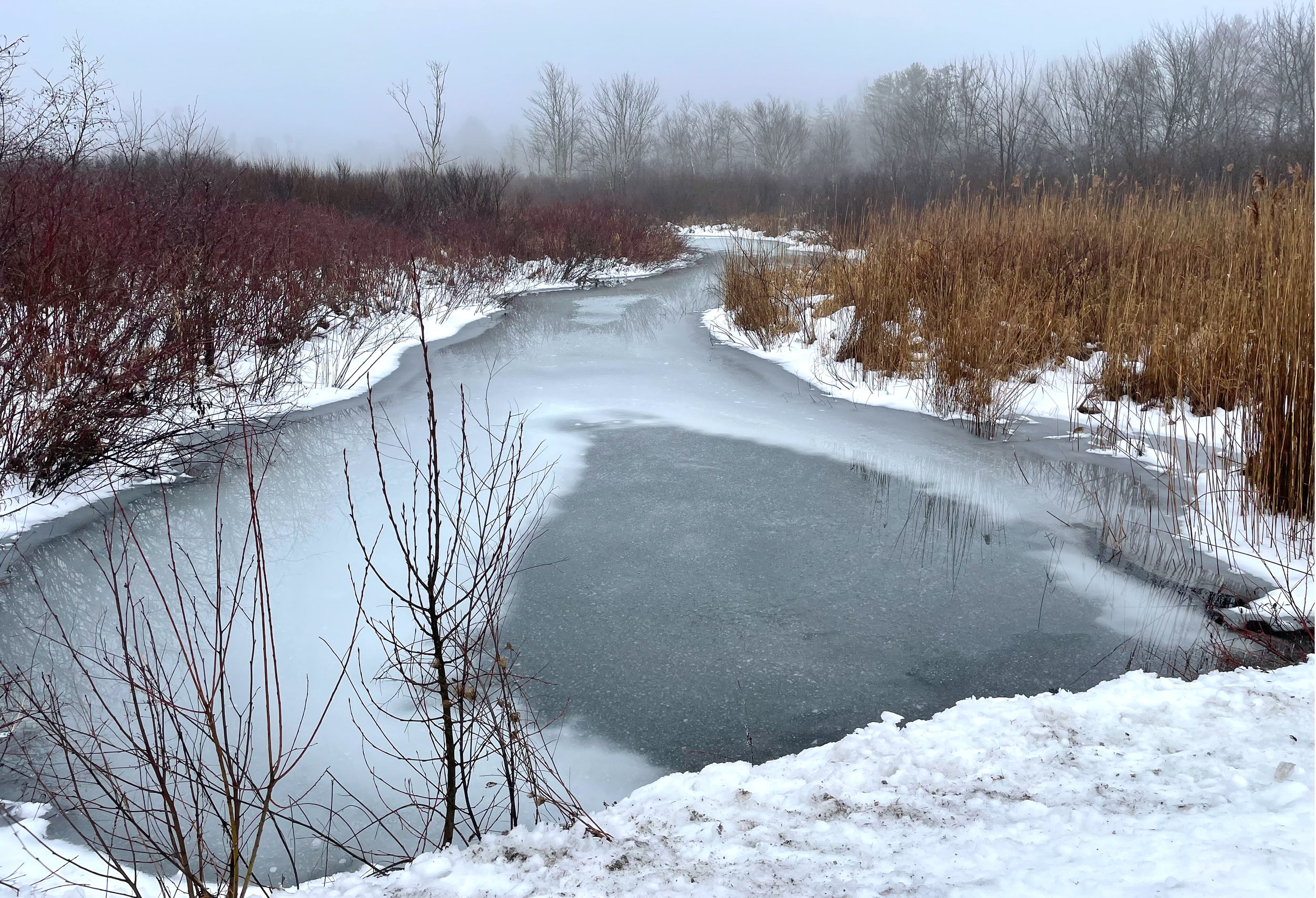Some fall color remains in the hills above the marsh. Photo by Joel Tilley.
Six birders counted 21 species during the November monitoring walk around West Rutland Marsh. As expected, the number of species is dropping as autumn progresses with migration all but over.
Our only sparrow species was Dark-eyed Junco with small flocks observed along the walk. There have been no reports of American Tree Sparrow at the feeders at the Marble Street boardwalk yet. They should be here any time.
Two Wild Turkeys were spotted in the field at the corner of Whipple Hollow Road and Pleasant Street.
A single Eastern Bluebird was heard. There was a fairly high count of Mourning Doves (47). American Goldfinch was also well represented with 26 observed.
Female Hairy Woodpecker. Photo by Sue Elliott.
The Whipple Hollow Trail was fairly quiet with only six species counted in that area, including a Hairy Woodpecker. A Brown Creeper was spotted briefly.
Our next walk is scheduled for Saturday, December 14, at 8 a.m., meeting at the Marble St boardwalk.
A full list of the day’s walk can be found here: https://ebird.org/tripreport/290923
It’s “stick season” for the aspens, but the seed heads of the goldenrod in the meadow retain a subtle beauty. Photo by Sue Elliott.
































